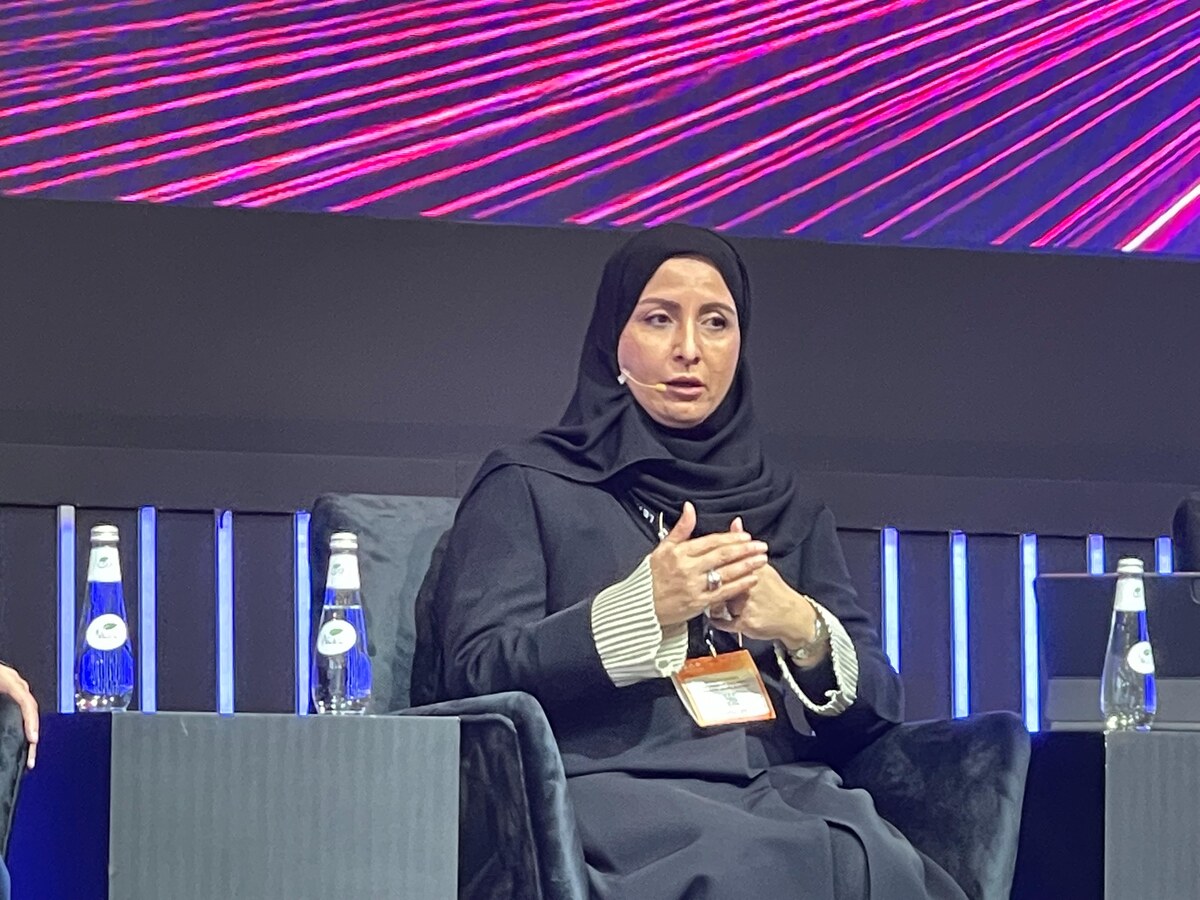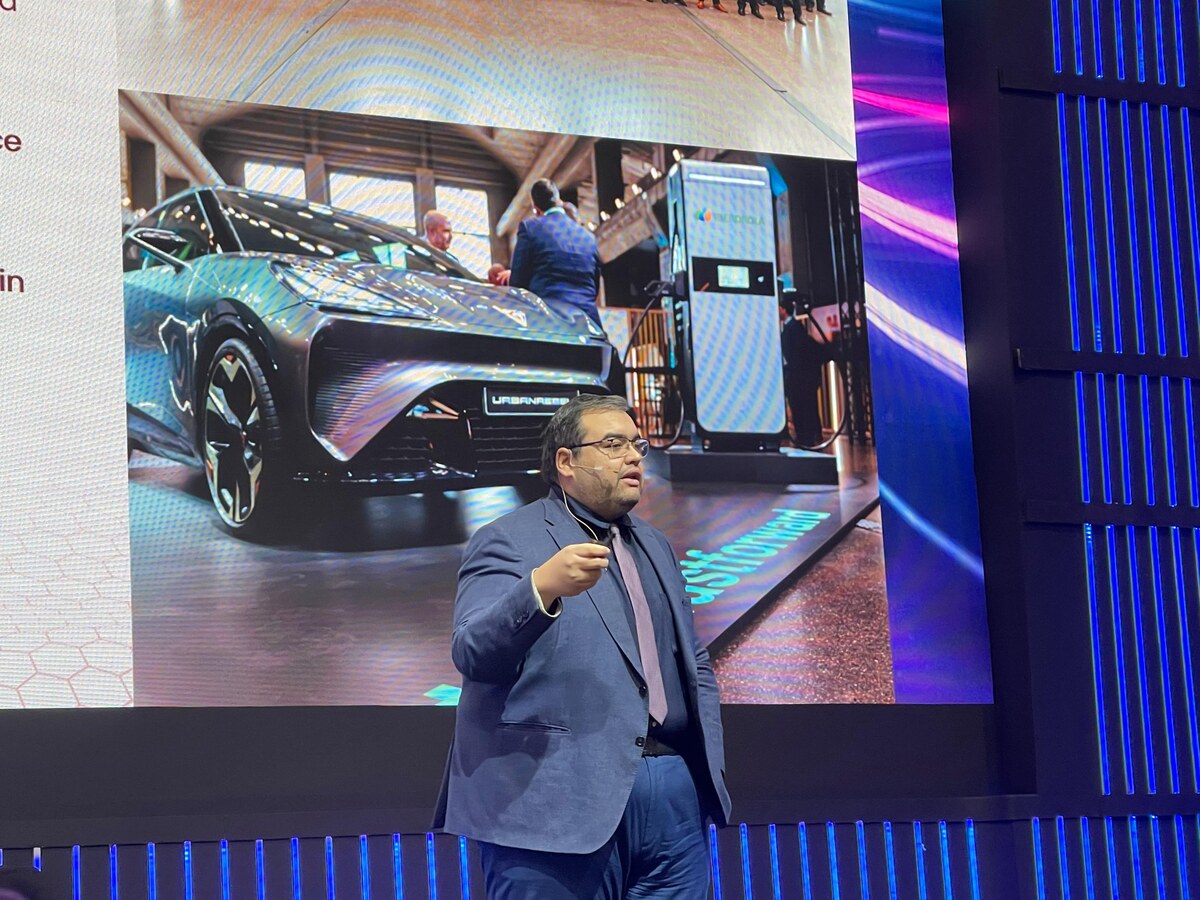RIYADH: Saudi Arabia is positioning itself at the forefront of mobility innovation, with industry leaders highlighting the potential of flying taxis and autonomous vehicles at the LEAP conference in Riyadh.
FlyNow, a developer of electric aviation solutions, is preparing to roll out a modular system of helicopters to transport goods and passengers, according to co-founder and chief operating officer Yvonne Winter.
“Economic growth is tightly linked to mobility,” Winter said during a panel discussion, adding: “And to solve traffic issues related to congestion, air quality pollution, and noise pollution, air transportation is the way to go.”
She described this new industry as “the low-altitude economy,” and insisted that “together we have to find a way to unlock it.”

FlyNow COO and co-founder Yvonne Winter. AN Photo
Winter noted that one of the biggest challenges for international governments and regulatory bodies is the absence of a feasible blueprint for implementation — an issue FlyNow has tackled with a step-by-step approach that “is considered to be very safe.”
As part of this approach, a regulatory sandbox has been developed to validate different vehicles, air traffic management systems, and operational reports before progressing to cargo applications.
Following extensive cargo trials over low-population areas, FlyNow plans to expand testing to urban settings and passenger transport.
Winter said e-helicopters will reduce waiting times and be both affordable and accessible to the public.
Mobility push
Ayman Mesfer, general manager of the Intelligence and Future Sector at the Ministry of Transport and Logistics Services, said Saudi Arabia is embracing new technologies across all transportation modes: land, air, and sea.
The ministry plans to launch an incubator to provide financial and advisory support for small and medium-sized enterprises working on mobility solutions.

Ayman Mesfer, general manager of the Intelligence and Future Sector at the Ministry of Transport and Logistics Services. AN Photo
“The ministry will take a look at deployment of new and major technologies from all aspects, from AI applications, data utilizations, as well as the talents as the enablers, and the infrastructure,” Mesfer said.
Omaima Bamasag, deputy of transport enablement at the Transport General Authority, highlighted the agency’s new Future Mobility Program. The initiative comprises 12 stakeholders from both the public and private sectors, working to identify gaps in Saudi Arabia’s mobility systems and propose new plans.

Omaima Bamasag, deputy of transport enablement at the Transport General Authority. AN Photo
Approved by the Higher Committee for Transportation, led by Crown Prince Mohammed bin Salman, the committee has already introduced 216 projects and identified 16 gaps, with alternative projects designed to bridge them.
Key successes include the development of a framework for autonomous vehicle policies, pilot requirements for AVs, the deployment of scooters during the past two Hajj seasons, a student shuttle at King Saud University, and Jahez food delivery services during Hajj.
“This is all piling up toward realizing AV ambitions and validating the AV policy and regulation that has been put forward. And keep an eye out for a pilot AV taxi that you will be seeing soon here in Riyadh,” Bamasag said.
Infrastructure and partnerships
According to Mesfer, the Ministry of Transport and Logistics Services has partnered with multiple entities to develop the regulatory framework and infrastructure for these technologies.
Alongside the General Authority for Civil Aviation, the ministry has developed an advanced air mobility roadmap tracking aviation and drone deployment.
It has also partnered with King Abdullah University of Science and Technology to construct a new testing ground, described as a “living lab” to assess technologies across land, maritime, railway, and aviation sectors. Additional collaborating entities include TGA and the Roads General Authority.
The country has already piloted an air taxi in NEOM, signaling its commitment to integrating futuristic transportation solutions.
In November 2023, TGA established a regulatory sandbox to facilitate the testing of unregulated mobility technologies. Since then, five business models have emerged: micromobility, e-scooters, e-car rentals, ride-sharing, and drop-off and pick-up boxes.
“Gathering all these challenges, trying to resolve them, and paving the way for these technologies to be regulated and then licensed.
Once these technologies or companies are licensed, they will have a tremendous impact on GDP and job creation,” he said.
On innovative mobility solutions, Antonio Jara, chief security officer of Libelium, spoke about the company’s work in Saudi Arabia and Europe to create digital twins for low-emission zones. These models integrate data from IoT sensors, noise, and air quality metrics.

Antonio Jara, chief security officer of Libelium. AN Photo
Jara emphasized the importance of data spaces for normalization, smart modeling, classification, and quality assessment, creating a secure data exchange platform between stakeholders.
That data is then incorporated into AI models, such as zonification for clustering, pollution simulation and forecasting or digital twins, CO2 equivalent modeling, and low-emission zone analysis.
These models help track pollution sources, provide sustainability impact assessments, and monitor crowd movement.
Libelium’s AI capabilities include data standardization, already implemented in major cities such as Amsterdam, Helsinki, and Paris. Other models focus on traffic prediction, meteorological data, clustering, and an LEZ service model for impact assessment.
Speaking to Arab News about Saudi applications, Jara said: “Aramco, Johns Hopkins — they are optimizing parking with these AI models. NEOM is another real example; they are monitoring all the pollution propagation from the tunnels, The Line.”
Pollution tracking involves both real-time data and predictive analysis.
“We are also doing a proof of concept in Riyadh municipality because they want to understand the real benefit of the metro in reducing traffic-related pollution,” Jara added.

























